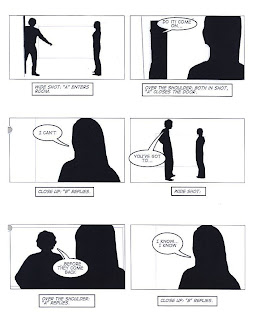Location
the location we filmed in the studio which was beneficial for our task as it allowed us to use different lighting and set the scene effectively in a large open space within a controlled environment. during the filming i took part in 3 different roles of directing the staging of the set and calling out commands such as stand by, roll camera and action. i also helped with he filming and ensuring we didn't break the 180 degree rule.
Lighting
our thought towards lighting was to make it naturalistic as if the event was actually occurring so not have it overly bright or dark, but as if it was daytime and the lights were simply on, so a sort of straw coloured gel tone. this was important to the scene because we wanted to make it as realistic as possible as if it was just two girls having a heated conversation during the middle of the day, and not add anything fancy which i think made the seriousness of the situation more severe as it was relatable.
Filming
with the filming we ensured that the camera was set up correctly and changed the height of the tripod according to each different shot. We also had to bubble the tripod, to make sure that the tripod was level in each shot. We also checked that each shot was framed correctly each times which meant checking the white balance and make sure it was in focus each time. We also ran through the scene on standby first to ensure we kept by the rule of thirds and that everything fitting into the shot correctly. Similarly, we had to make sure that the lighting equipment and shadows that it caused was not in any of our shot as it could effect the realism of it and caused problems later in editing. We also had to make sure that we were using the appropriate camera angles, such as the over the shoulder shot and close ups. We chose these types of shots because it allowed us to get the reaction of the actor to what has just being said, so the audience watching would know how they were feeling and set a mood for what was happening. Also, we filmed the shots using practical and appropriate planning, this meant choosing one shot and filming the whole sequence through with it, this may seem tedious but was useful in editing because it meant that we had a lot of material in which to work with.
So far, this prelim task has taught how to confidently use the camera and shown me how important things such as the 180degree rule is, also the whole feel of being on a set and using the appropriate terminology.

